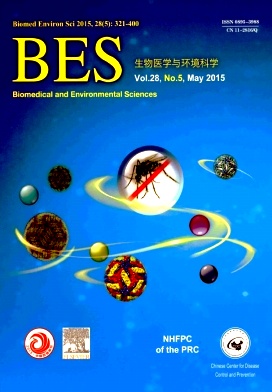Toxicity of Graphene Quantum Dots in Zebrafish Embryo
doi: 10.3967/bes2015.048
-
Key words:
- Graphene quantum dots /
- Zebrafish /
- Embryo /
- Developmental toxicity
Abstract: Objective To evaluate the bio-safety of graphene quantum dots (GQDs), we studied its effects on the embryonic development of zebrafish.
Methods In vivo, biodistribution and the developmental toxicity of GQDs were investigated in embryonic zebrafish at exposure concentrations ranging from 12.5-200 μg/mL for 4-96 h post-fertilization (hpf). The mortality, hatch rate, malformation, heart rate, GQDs uptake, spontaneous movement, and larval behavior were examined.
Results The fluorescence of GQDs was mainly localized in the intestines and heart. As the exposure concentration increased, the hatch and heart rate decreased, accompanied by an increase in mortality. Exposure to a high level of GQDs (200 μg/mL) resulted in various embryonic malformations including pericardial edema, vitelline cyst, bent spine, and bent tail. The spontaneous movement significantly decreased after exposure to GQDs at concentrations of 50, 100, and 200 μg/mL. The larval behavior testing (visible light test) showed that the total swimming distance and speed decreased dose-dependently. Embryos exposed to 12.5 μg/mL showed hyperactivity while exposure to higher concentrations (25, 50, 100, and 200μg/mL) caused remarkable hypoactivity in the light-dark test.
Conclusion Low concentrations of GQDs were relatively non-toxic. However, GQDs disrupt the progression of embryonic development at concentrations exceeding 50μg/mL.
| Citation: | WANG Zhen Guo, a ZHOU Rong, a JIANG Dan, SONG Jing E, XU Qian, SI Jing, CHEN Yun Ping, ZHOU Xin, GAN Lu, LI Jian Zhen, ZHANG Hong, LIU Bin. Toxicity of Graphene Quantum Dots in Zebrafish Embryo[J]. Biomedical and Environmental Sciences, 2015, 28(5): 341-351. doi: 10.3967/bes2015.048 |







 Quick Links
Quick Links
 DownLoad:
DownLoad: